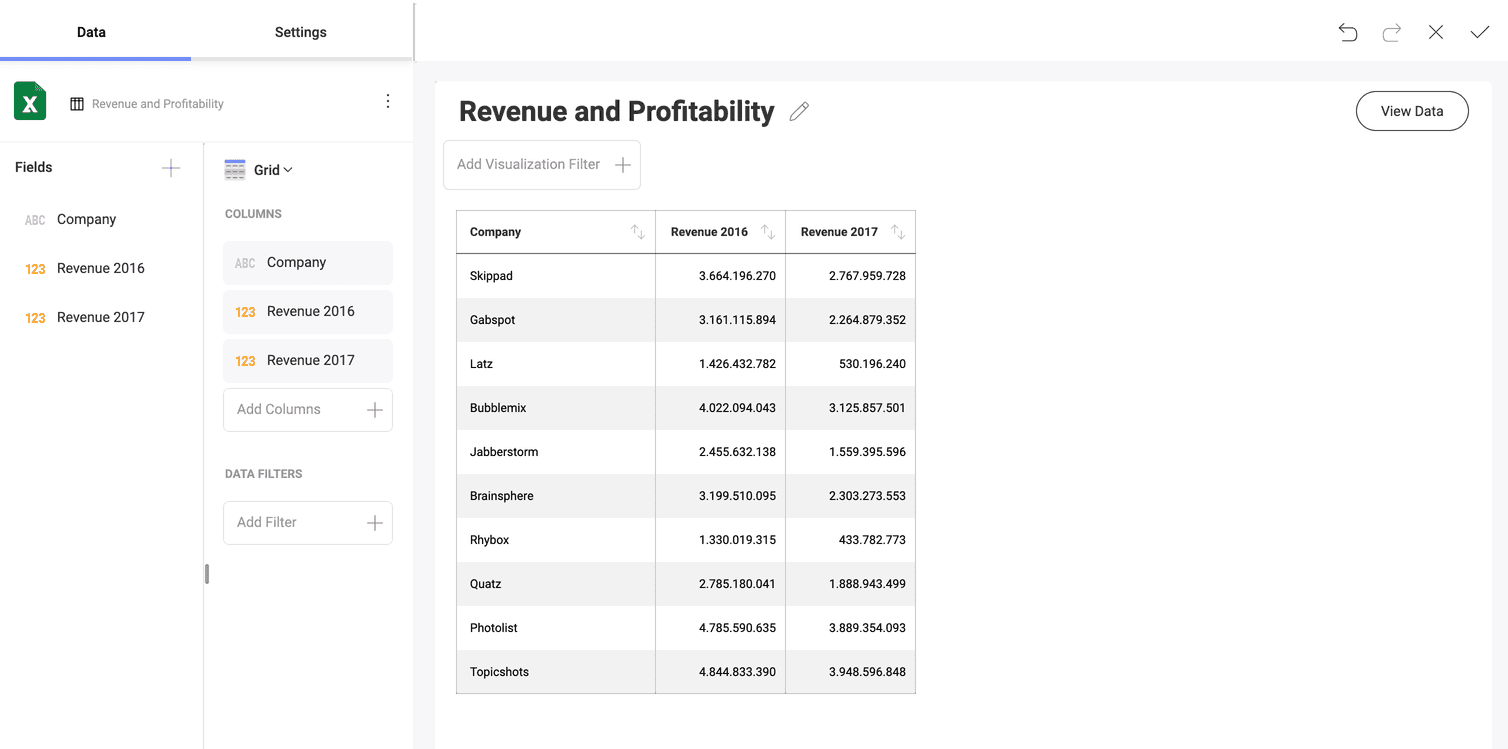サンプル、ヒント、および便利なケース
ベーシックなサンプル式
以下は計算フィールドのサンプル式のセットです。
| 関数名 | 関数をテストするためのサンプル データセット | 式 | サンプル出力 |
|---|---|---|---|
| Opposite Value | HR Dataset | -[Wage] | -36,542.00 (for Joan Baez) |
| Age | HR Dataset | (today()-[BirthDate])/365 | 50.13 (for Joan Baez) |
| Name & Department | HR Dataset | [Fullname]& ", " &[Department] | Joan Baez, Development (for Joan Baez) |
| Sales Percentage | Samples | [New Sales]*100/sum([New Sales]) | 9,26% (for Japan) |
| Name starts with J | HR Dataset | if(find("j",lower([Fullname]),1)=1,"Starts with J",0) | Starts with J, 0 |
| Deviation from Avg | HR Dataset | [Wage]-average([Wage]) | -50476.71 (for Joan Baez) |
Unix 更新日時を使用可能な日付へ変換
1970 年 1 月 1 日後の秒によって定義される Unix 時間 (Epoch 時間) はすべてのタイムゾーンを一度に表すために便利です。Unix 更新日時を持つデータ ソースをインポートする場合、date 数式を使用して利用可能な日付に変換できます。
((([Unix Time Stamp]/60)/60)/24)+DATE(1970,1,1)+([Timezone]/24)
説明:
-
オリジナルのフィールド: [Unix Time Stamp]
-
分に変換: /60
-
時に変換: /60
-
日に変換: /24
-
Epoch 時間の追加: +DATE(1970,1,1)
-
タイムゾーンの追加: +([Timezone]/24)
タイムゾーンを数値として入力するか、数値を持つフィールドを使用できます。GMT 時間が必要です。
YoY 解析: 売上を 2 年期間の比較
計算フィールドを簡易な YOY 解析を実行するために作成できます。
以下のダッシュボードを参照します。会社の事業部および 2 年間の売上を表示します。

以下の計算フィールドを使用して 2 つの数値を比較できます。「-1」 は年の違いを減算します。
([Revenue 2017]/[Revenue 2016])-1
数値を使用するか、パーセンテージとして書式設定できます。
